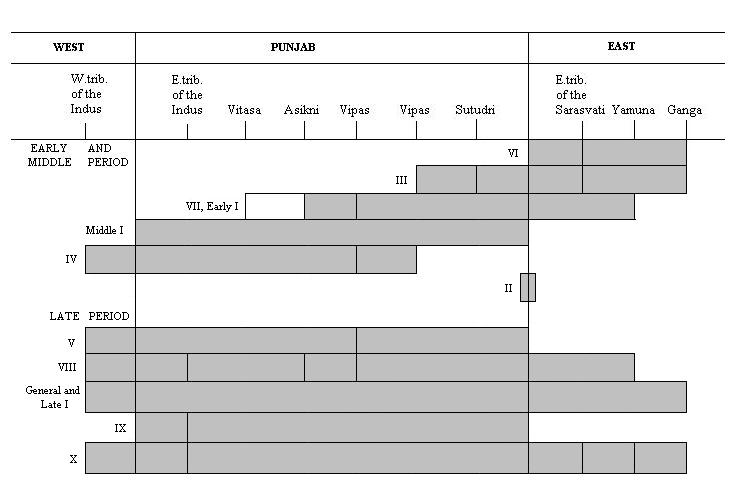X-Posting from a Sulekha Blog
"Fabricating History – 2000 BC" by another Aryan-Sepoy DMR Sekhar.
Dear DMR Sekhar Sb,
dmrsekhar wrote:Mala (38.

, Madiga (40.6), Chenchu (40.7), Bhil (42.9), Satnami (43.0), Kurumba (43.2), Kamsali (44.5), Vysya (46.2), Lodi (49.9), Naidu (50.1), Tharu (51.0), Velama (54.7), Srivastava (56.4), Meghwal (60.3), Vaish (62.6), Kashmir Pandit (70.6), Sindhi (73.7), Pathan (76.9).
What do we conclude? The present day/ living representatives of Ancient South Indians are Mala, Madiga, Chenchu and Bhils while the present day representatives of ANI are Pathans, Sindhi, Kashmir Pandit and Vaish.
Again that is a wrong conclusion! A very wrong conclusion! But you have quoted the data correctly.
When one speaks of "representative", one is making a political statement! It doesn't remain a simple scientific, matter-of-course statement!
Nobody today really represents any ancestral group, be it ANI or ASI. Why not?
Well for one thing nobody is really pure and identical with any ancestral group! Don't the Pushtun too have some ASI, be it just 20%? If they do not embrace that 20%, what should they do? Should each Pathan somehow purge that 20% of their DNA and get a replacement DNA? Well, technology has not advanced that far as yet! Or should the Pathan declare symbolically that 1/5 of him is undesired ASI and so he will cut off 20% of his body, let's say a leg? Would the Pathan do show consistency? Or should the Pathans throw out all other Pathans from among them, whose genetic profile does not adhere to some pure ANI thought up by some evolutionary geneticists?
The point is that 20% ASI is just as much a part of the Pathan as the 76.9% ANI!
Similar is the case with Malas and Madigas from Andhra or Paraiyars from Tamil Nadu!
Can they in the name of pure Dravidianism purge their 40% ANI component? No they can't nor they should!
So this whole case of "representativeness" is skewed. It is like one would say, the right hand would speak for the whole body, while the left would be cut off!
If one has a little bit of ASI, one can speak for ASI, and if one has a little bit of ANI as well, one can speak for ANI too!
ANI and ASI are part of all of us in the Indian Subcontinent, and we would have to embrace both parts of it! Neither a Pathan nor a Mala can have more or exclusive representativeness in a cultural sense over either ANI or ASI, if they are to be considered as politico-cultural identities!
Both ANI and ASI have together created the Indian Civilization and that is what we can represent culturally!
dmrsekhar wrote:Because Bhils are in North India the right term for ASI is Ancient Indians. The Ahari culture which is known for metallurgy from the period 3600 BC is in fact Bhil culture. Ahari is a sub group of Bhils around Udaipur. It is Bhils (also known as Meena) who mothered (Satyavati also known as Matsya Gandhi) Krishna Dwipayana (Ved Vyas), all the Kauravas and Pandavas! The same Bhils are known in South India as Villavars!!
http://en.wikipedia.org/wiki/Villavar
So where is the South/ North divide?
The North-South Divide may have existed thousands of years back as ANI and ASI entered India and marked out their territories. Those divides are however long gone!
Not only are ASI to be termed as Ancient Indians, but also ANI are Ancient Indians!
dmrsekhar wrote:On the other hand the true representatives of ANI are in Pakistan and Afghanistan!! That is why Afghans have the highest R1a sub clads!! Which you miss to refer and which I quoted as, “The R1a1 frequency in Afghanistan South is (65.75/65.75) and in a social group in Central Uttar Pradesh is (39.7/39.7) as noted from
http://www.nature.com/ejhg/journal/vaop ... 259x10.doc .”
Historically speaking these identity categories are very very recent - Afghanistan, Pakistan, Afghans, Pakistanis, etc.! These are cultural categories which have distanced themselves from the main civilizational identity that ANI and ASI had created over a period of 40,000 years of cohabitation in the Indian Subcontinent!
True, in these regions the genetic markers for ANI are particularly strong, but historically and genetically speaking they too are Indians, and as a form of cultural identity they represent ANI neither more nor less than say a Mala from Andhra!
Genetically they are all mixed, both ANI AND ASI, and as such culturally they can identify themselves only with what the two components have built up as a civilization, that is should they choose to identify themselves over their ethnicity!


